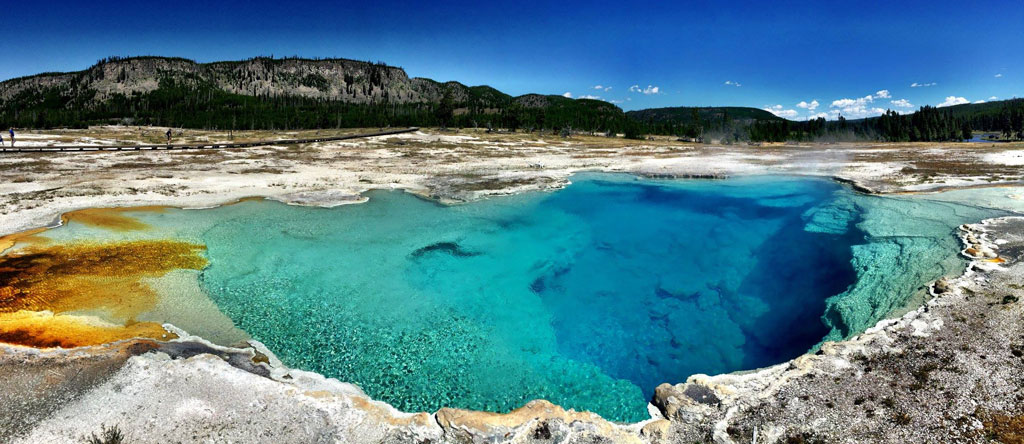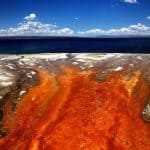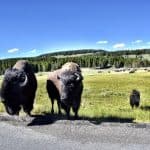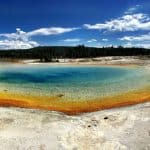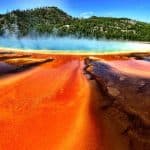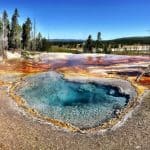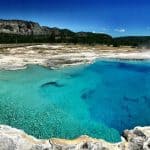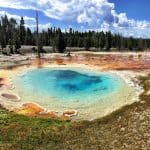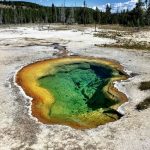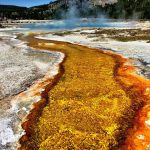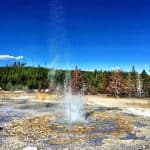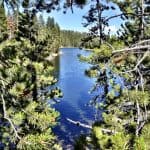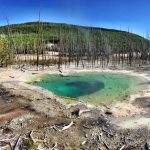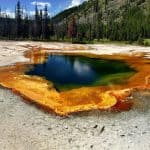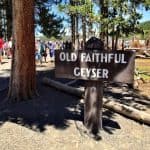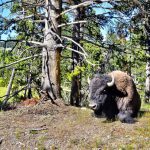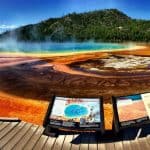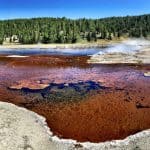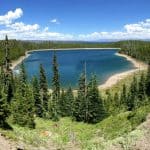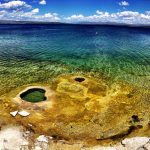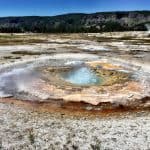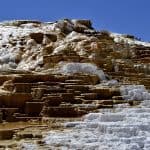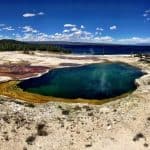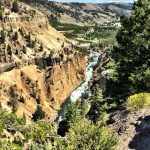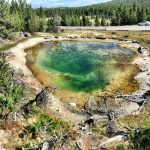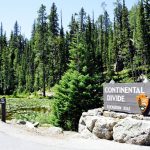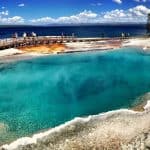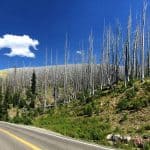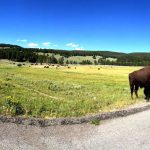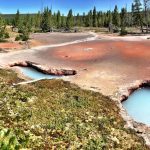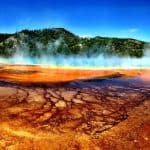When I was a children, we constantly visited the Kruger National Park. Our game park visits were so endemic that it actually was a surprise when we took off to the beach or an Overvaal resort with our caravan.
The Kruger was like heaven for me. Some of my best memories from the 1980s are of us creeping forward at 40 km/h, in silence (the only cassette allowed in the car radio was Klanke van die Bosveld, and that was only after we saw nothing but impala for hours on end). In the back seat, I feverishly paged through Mammals of the Kruger National Park, trying to distinguish between the footprints, ears and… well, the turds of a blue duiker and a klipspringer.
So I fiercely love national parks, even more so as an adult than as the kid whose heroes were Naas Botha and Die Uile van Kranskop. Over the years, I was fortunate enough to visit dozens of national parks on several continents, but not one of those ever matched the toe-curling pleasure of a visit to the Kruger National Park. And then I discovered the Yellowstone National Park in Wyoming…
That place is an absolute miracle of God! In 1872 the park became the first promulgated national park in the world. It covers nearly 9 000 square kilometres and is home to spectacular lakes, canyons, rivers and mountains. What is more, the park is located right on top of the Yellowstone Caldera – the largest super volcano on the North American continent. The volcano is active and has erupted several times over the past 2 million years. It is predicted that it will erupt again within the next 200 000 years. So if you own property in the area, that time frame should give you at least enough time to get your insurance in order.
It is important to mention the volcano, because this natural phenomenon is directly responsible for the park’s most famous feature – its geothermal features. Uhm… the what?
Okay, so water is seeping through the soil while getting heated by the volcano’s magma until it erupts as a geyser on the surface. (This is pronounced as “ghaizer”, not “ghiezer”, as I learned from my silent embarrassment.) There are about 500 of these geysers in the park, of which Old Faithful is the largest and best-known; it spits a thick jet of steam and hot water on the surface approximately every 90 minutes.
The boiling excrement then coalesce in pools on the surface (almost like hot open-air baths for the treatment of rheumatism). Due to specific chemicals found in the water, the pools boast with the most spectacular colours. In many cases it seems as if a giant eye was created on the earth’s surface and in this post-apocalyptic landscape I had to pinch myself a few times to make sure that what I’m looking at is real.
However, the sulphide in the water reeks much worse than anything from a high school science classroom. That part of the world may look like heaven, but it smells like hell.
Aside from those smelly, multi-coloured natural wonders, Yellowstone also is home to hundreds of plant and animal species. I have seen many foxes, coyotes (a kind of wolfhound) and deer, but my favourite is undoubtedly the bison (or perhaps the Afrikaans plural is “bisonne”, although it can be confusing: Cadbury is nice, but Lindt is “bisonne” (very) nice). I was endlessly fascinated by these stocky buffaloes with their weird build and I could not get away from the idea that if they were people, they would scrum in the front rank.
******************************************************************************
While we were creeping on in the Kruger National Park in those days, the best indication of “something” worthwhile to look at was a fellow game viewer’s stationary car in the middle of the road. As we approached the car, we first tried to determine whether the occupants were looking at “something” on the left or on the right-hand side of the road. Then we had to determine whether the “something” could be seen with the naked eye or only through a pair of binoculars. Only then the Great Gazing could start…
Sometimes the “something” would expose itself quickly. That’s how we found lions, leopards and at a time even a pangolin, which we would certainly not have seen if not for the help of our fellow game viewers. But sometimes we just could not find the “something”. We always felt slightly uneasy when moving in slowly beside the strangers in the stationary car, hoping that they would reveal the position of the “something” to us. For me, as a canakin only interested in rhinos, predators and red reebok rams, it was always a hellish disappointment when more or less the following conversation followed:
My dad: Morning! What do you guys see?
Their dad: Morning! Man, it is about fifty meters into the veld, just to the left of that big wait-a-bit-tree. Do you see it?
My dad: Uhm… I’m not sure. What is it?
Their dad: No man, watch carefully, you can’t miss it. It’s a… It’s a… saddlebill stork.
My intense grief with birdwatching was only beaten by people in the other car fixating not on animals or birds, but in fact on an all-time low – trees. Trees?! Who in their right mind would visit the Kruger Park to look at trees? I could never get a grip on that.
Well, late one afternoon, en route to Yellowstone’s exit, we drove round a bend in the road – only to knock into a larger traffic congestion than on a weekday morning on the Ben Schoeman highway between Pretoria and Johannesburg. I was convinced that the fanfare could only be justified by a bison standing on hind legs while whistling the US national anthem through its rear end.
For an eternity (our honourable president would assume that it took in the area of seven and thirteen and four minutes) a never-ending line of cars creeped at the pace of a crippled snail in the direction the exit. Our speculation as to what the cause of the delay could be, covered the full spectrum – from the unlikely (a pregnant deer giving birth in the middle of the road) to the indecent (Hillary Clinton and Donald Trump making out under a tree).
When we arrived at the source of the traffic jam at last, I noticed a group of people armed with camera lenses fit for capturing the craters on the moon in high definition. They huddled along the road, staring at something more or less a hundred meters away on the far side of a river. I joined them with buzzing excitement, hoping that it really would be something quite remarkable. But my hopes were dashed – the object of their focus was just a coyote. A single one. Not dancing on its front legs. Nor whistling the American national anthem through its rear.
One can only wonder how this shebang, who found a small wolfhound entertaining enough to pester it with their gigantic camera lenses, would react if they came across a pride of lions in the middle of the road in Africa.
******************************************************************************
If you’ve told me in 1980s that somewhere in the world there is a national park that equals the Kruger National Park in all respects, I would not have believed you. But in the Yellowstone National Park I saw it with my own eyes. There certainly is no giraffe, baobab or beady-eyed bird, but what I have seen will certainly stay with me for ever.
Please visit Fanie’s website, Fanie Os Oppie Jas, and his Facebook page, Fanie Os Oppie Jas: howzit my China.
Also Read: Fanie who?



